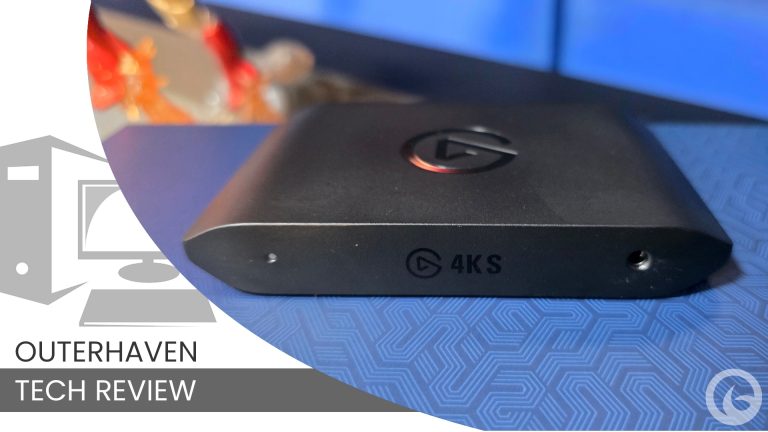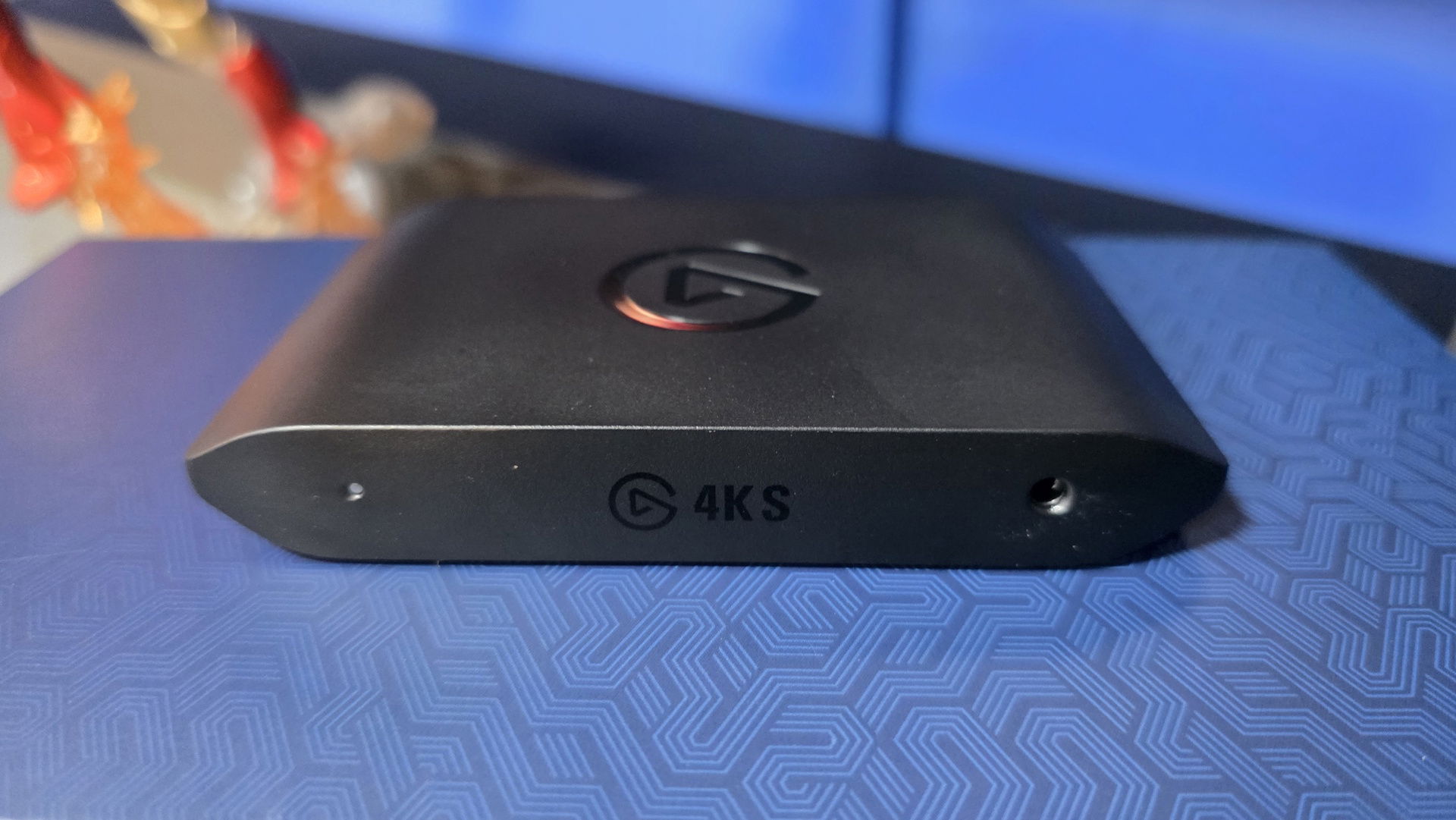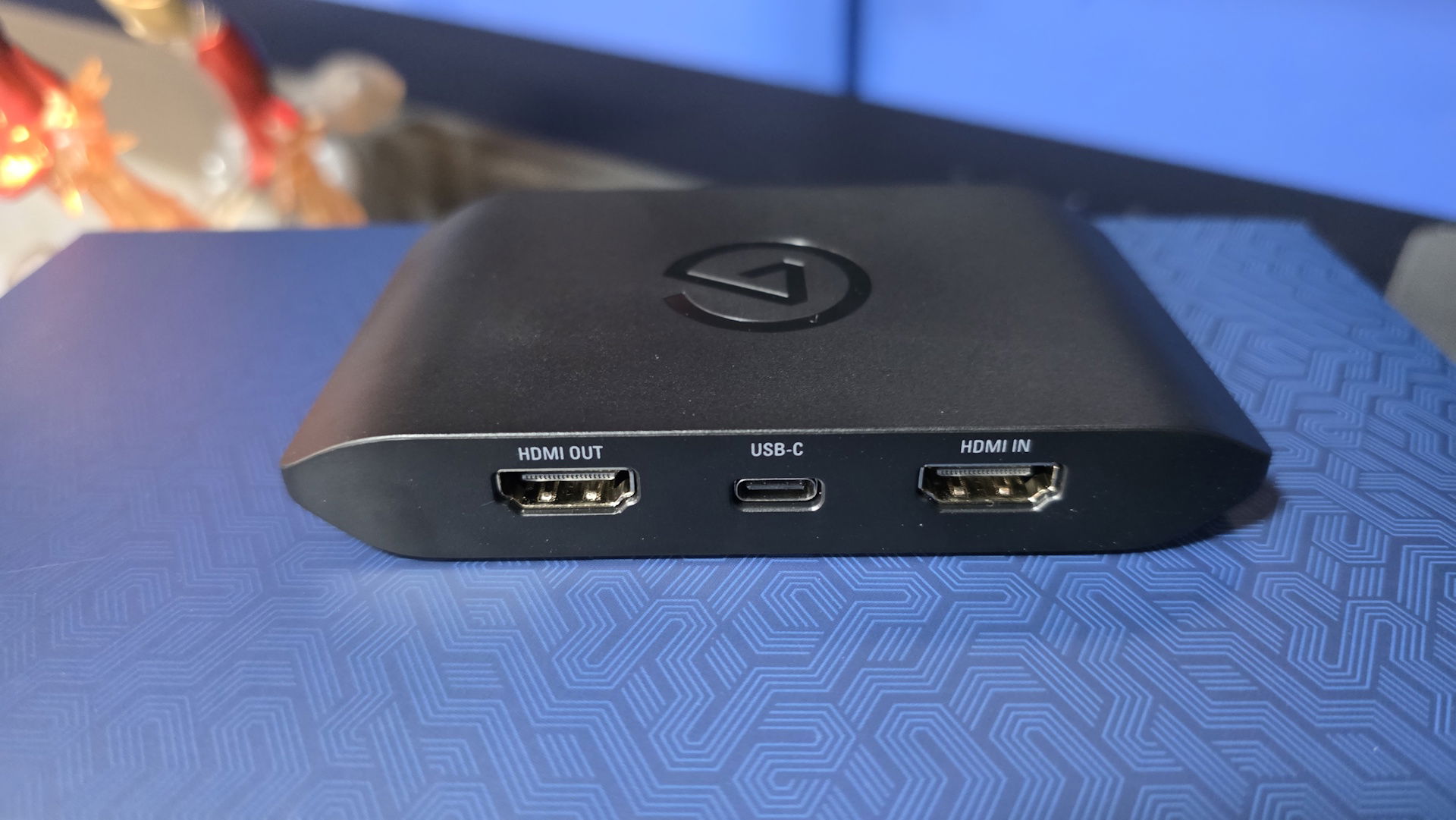One of my main issues with capture devices has always been that most require installation inside a PC to be worthwhile. That’s not the case anymore. Elgato first tried to solve this with the 4K X, but it was expensive and offered more than many content creators really needed. Now, Elgato has released the 4K S. This model replaces the HD60 X, while also supporting 4K passthrough and recording. The question is, how does it fit into Elgato’s lineup?
Product Name: Elgato 4K S
Product Type: Capture Device
Manufacturer: Elgato / Corsair
Compatible With: Windows, macOS, iPadOS
Price: $159.99
Elgato continues to lead the way in game capture hardware, and the 4K S is proof of that. This compact external capture card delivers high-quality recording and streaming at 4K60 HDR, with passthrough that supports 4K144, VRR, and HDR10. It is a great choice for console players and PC streamers who want to capture great footage without breaking the bank.
Setup and Compatibility
The Elgato 4K S keeps the port layout simple and easy to manage. On one side, you have the HDMI input for your console, PC, or other video source, and right next to it is the HDMI output that delivers lag-free passthrough to your monitor or TV. This lets you play at your display’s full resolution and refresh rate while the card handles recording in the background. The device also includes a USB-C port that takes care of both data transfer and power, requiring a single cable to connect it to your PC, Mac, or even an iPad.
What is new to the party is the addition of a 3.5 mm stereo line-in, which can be used for bringing in external audio from a mixer, secondary device, or other audio source without relying on software routing. This has not been included in any of the Elgato portable capture devices until now. The device may look barebones, but it covers everything most creators need.
Like most Elgato devices, it is plug-and-play with their software, so you can be recording or streaming in minutes. The design is minimal but sturdy, and the HDMI 2.0 ports make it compatible with modern consoles like the PlayStation 5, Xbox Series X|S, Switch 2, and high-end PCs.
Elgato 4K S Specs
| Feature | Elgato 4K S |
|---|---|
| Connectivity | USB 3.0 Type-C (bus-powered) |
| Inputs/Outputs | HDMI 2.0 in / HDMI 2.0 out, 3.5 mm stereo line-in |
| Max Capture | 4K60 HDR10 |
| Passthrough | Up to 4K144, VRR + HDR10 supported |
| Supported Resolutions & Modes | 1080p: Passthrough 60/120/144/240 fps, Capture 30/60 (HDR)/120/240 fps 1440p: Passthrough 60/120/144 fps, Capture 30/60/120/144 fps 4K: Passthrough 60 fps, Capture 30/60 fps (HDR supported at 30/60) |
| Latency | Ultra-low (sub-100 ms) |
| Compatibility | Windows, macOS, iPadOS (UVC driverless support) |
| Software | Elgato 4K Capture Utility, OBS, Streamlabs |
| Dimensions | 112 x 72 x 18 mm / 4.4 x 2.8 x 0.7 in |
| Limitations | No HDMI 2.1 (the 4K X offers higher-refresh capture and passthrough) |
Performance and Recording Quality
Performance is where the 4K S shines. Recording at 4K60 HDR looks sharp, and latency is nearly unnoticeable. Passthrough supports up to 4K144, which means you can still enjoy high-refresh rate gaming while recording at 4K60. It also supports VRR and HDR10, ensuring smooth visuals that match what you see on screen.
I’m usually skeptical when it comes to claims of zero or ultra-low latency with passthrough, and even at home, I don’t use it. Instead, I use a matrix in a super complicated PC and console setup. However, I’m happy to report that those claims are true. I didn’t notice any latency that affected my gameplay while I was testing with Elden Ring Nightreign, Resident Evil Village, or Donkey Kong Bananaza. I didn’t encounter any issues whatsoever.
Between my 4K Pro Mk II and capturing on the 4K S, while there are subtle differences with the encoded footage, unless you sat there nitpicking, you wouldn’t see the difference. I consider that pretty damned amazing.
Perhaps the best thing about the Elgato 4K S is that it supports UVC, which makes it a handy device to use, especially with an iPad, giving you portable recording on the go. Since iPadOS natively supports UVC devices, the iPad sees it as a standard video input. I have used this ability on several occasions, such as recording content at events or while relaxing in my living room, and still wanting to capture gameplay for content creation. All while not requiring any extra effort, as the 4K S can be powered by the USB-C cable from the iPad.
Of course, your standard recording programs, such as OBS, work without any issues, or you can opt to use the Elgato 4K Capture Utility or the Studio App. Any of them will work, as does other recording and streaming software.
Portable Recording Power
Final Verdict
The Elgato 4K S delivers exactly what most creators need. It offers 4K HDR recording, smooth high-refresh passthrough, and iPad support in a compact and affordable package. The lack of HDMI 2.1 and higher 4K capture rates may hold back advanced users, yet VRR, HDR10 are still included, and the price is aggressively placed. With the release of the device, there’s little reason to purchase the Elgato HD60 X, which I presume was the idea in the first place, since 4K content creation has taken off, thanks to more powerful gaming consoles.
At nearly $90 less than the 4K X, the 4K S is an excellent choice for streamers and content creators who don’t want to shell out the big dollars, open up their PCs, or need a portable pocket device that captures amazing quality footage. If you need reliable 4K recording on the go, you’ll be hard-pressed to ignore this one.
Review Disclosure Statement: The Elgato 4K S was provided for review purposes. For more information on how we review video games and other media/technology, please review our Review Guideline/Scoring Policy.
Affiliate Link Disclosure: One or more of the links above contain affiliate links, which means at no additional cost to you, we may receive a commission should you click through and purchase the item.
Summary
The Elgato 4K S is a pocket-sized but powerful tool that has quickly become essential in my content creation kit. Whether I’m working from home or recording on the go at events, it delivers reliable, high-quality captures.




